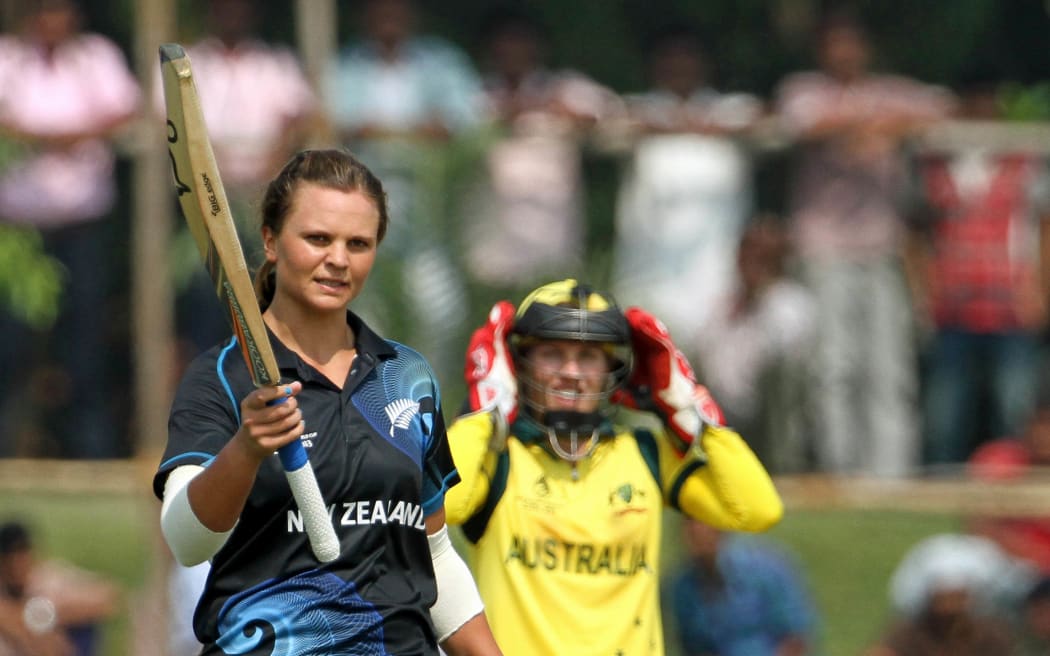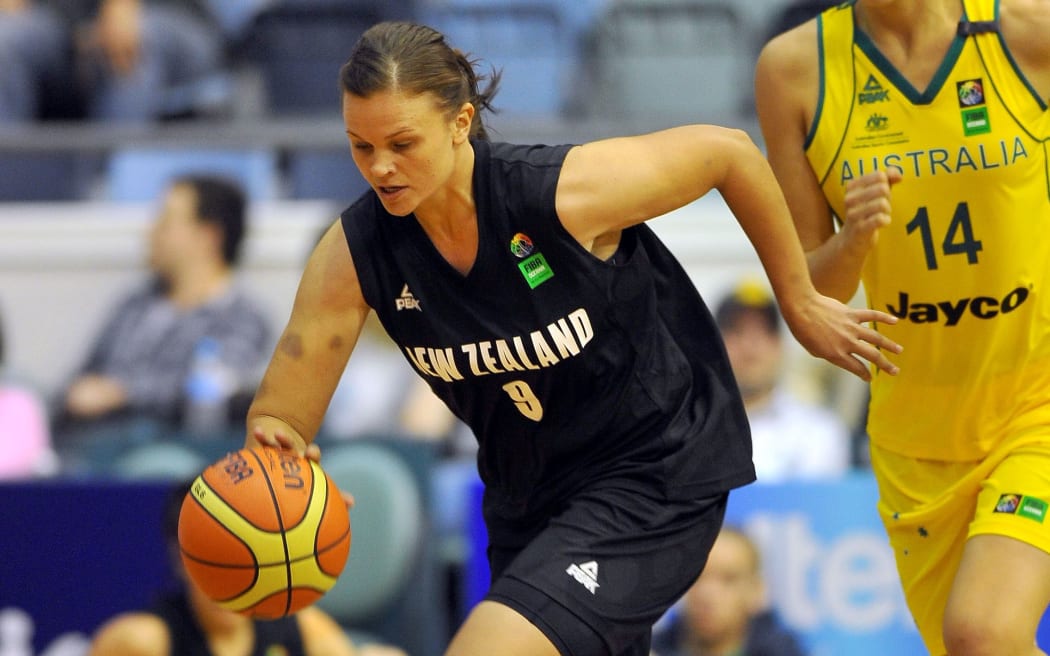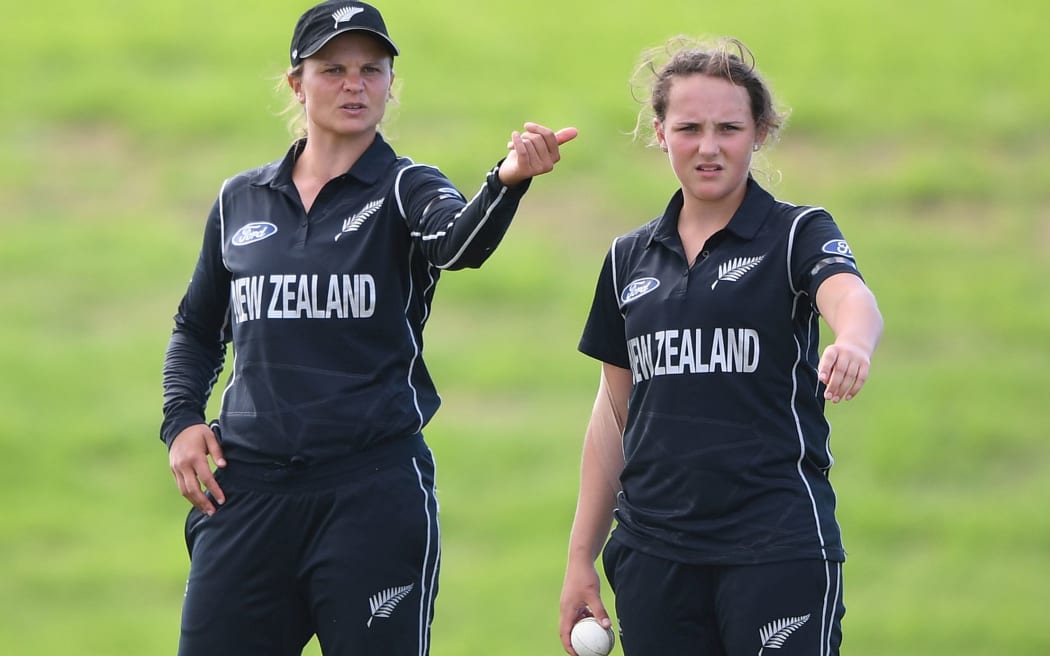We've got a great shot at winning the Cricket World Cup. You should be watching.

Suzie Bates celebrates scoring a century against Australia in 2013. Photo: Photosport
Ten years ago, Suzie Bates was playing cricket for fun while studying at Otago University. She’s now a legend of the sport.
Bates was set to play her 100th one-day international last night, the eighth New Zealand woman to reach the milestone, but the White Ferns' second World Cup game against South Africa was abandoned thanks to the miserable British summer.
The third-ranked side in the world convincingly won their opener against Sri Lanka. Bates scored a thrilling unbeaten 106.
“I was at university and cricket was bit of a hobby. I really didn't see it going professional,” she says. “So to still be playing at 29 and be able to play in my 100th game on Wednesday is exciting. I can't remember where the last 10-11 years have gone.”
Bates may not remember, but her achievements are remarkable. She has scored 3598 ODI runs at an average of 42.32, currently the 15th best in history. Her record of eight centuries is better than all but two of the 14 women above her.
At the 2013 World Cup, she scored a tournament-best 407 runs and was named its best player, despite New Zealand finishing fourth.
In January, she became the first cricketer to score both the Women’s ODI and T20I Player of the Year awards. The year before, cricket bible Wisden named her the best women’s player in the world.
She is also a rare double international who represented New Zealand in basketball at the 2008 Beijing Olympics. She gave up professional basketball to focus on cricket.
Suzie Bates has been outspoken about increasing the sport’s prominence and recognition. Two years ago, she publicly expressed her frustration at not being able to play Test cricket. In an interview with Cricinfo she said she felt “a bit cheated”.
The White Ferns last played a Test match - the five-day version of the game - in 2004.
“It's something I've always pushed for at New Zealand Cricket, and I know the argument is they want to push T20 because that's a spectacle and [helps in] promoting the game,” Bates says.
“I still wonder why it's not five days. It's a bit like women's tennis where they play three sets in grand slams, and I think it's a bit traditional, that maybe women couldn't handle five sets or five days is too long? But I think, why not have a five-day Test match?”
In mid-2016, New Zealand Cricket increased the salaries of its female contracted players from between $10,000-$12,000 per year to $20,000-$34,000. The top players, like Bates, also compete in domestic competitions overseas, such as the Australian Big Bash league.
For comparison, the base salary for a men’s international last year was $85,585. Black Caps captain Kane Williamson’s annual retainer for 2016/17, before match fees and foreign contracts, was $205,266.
At the time, New Zealand Cricket defended the disparity, saying its funding from broadcast rights came almost 100 percent from the men’s game. “The differences in the pay reflect that,” chief executive David White told media.
Bates says women’s cricket has come a long way from when she started in 2006 and would receive a $30 daily allowance. “That was still a bit of pocket money,” she says.

Suzie Bates gave up her basketball career to concentrate on cricket. Photo: Photosport
“It was just a bit of a hobby for everyone. Other people were studying, some were at school, and you got together and going on tour was the best thing ever.
"Now, half-a-dozen of us do it for 10 months of the year, full-time, and get paid for it. When I first started, not just as a cricketer but just as a girl who loved sport, I never really thought it was going to be a career … I always thought I was going to have to get a real job at some stage.”
The sport’s governing body, the International Cricket Council, says it wants to achieve prize money parity with the men’s game within 15 years.
The ICC has set the prize money for this year’s World Cup at about $2.75m, a 10-fold increase from 2013.
Many are tipping the White Ferns as serious contenders to win title.
Bates played in the side that narrowly finished runners-up to England at the 2009 World Cup, the closest they’ve come to winning the competition since 2000, their only triumph.
Despite their excellent start, the team’s vice-captain Amy Satterthwaite, who has herself played 96 ODIs, says they’re trying not to get ahead of themselves.
“To get that first win was a huge confidence boost for the girls and helped get that nervous energy out,” she says.
“[But] it is a tournament where you’ve got to look forward to one game at a time.”
She has played with Bates for 10 years. They are two of the only three Kiwi women to have surpassed 3000 ODI runs. Satterthwaite is currently third in the world batting rankings, ahead of Bates in fourth.
“Suzie’s importance to the team has been astronomical and she really sets the tone and likes to lead from the front,” Satterthwaite says.
“She’s someone we’re very fortunate to have on our team … she’s a really good role model, not just for the players, but for kids around the world.”
Bates is helping mentor 16-year-old leg spinner Amelia Kerr, who made the World Cup squad at a time when her contemporaries at Tawa College near Wellington are studying for mid-year exams.

Suzie Bates and 16-year-old Amelia Kerr work out field positions. Photo: Photosport
Kerr is a prodigy, having made her debut for the Wellington Blaze at 14.
“Playing women’s senior cricket when I was young means I’m a bit more used to playing against and being around older players,” she says.
“I’ve been lucky enough to play in boys cricket at home which has been a good challenge.”
The White Ferns next face Australia at 9.30pm on July 2. The tournament is broadcast on Sky Sport.
For more information about the 2017 World Cup, check out the ICC and Black Caps websites.


